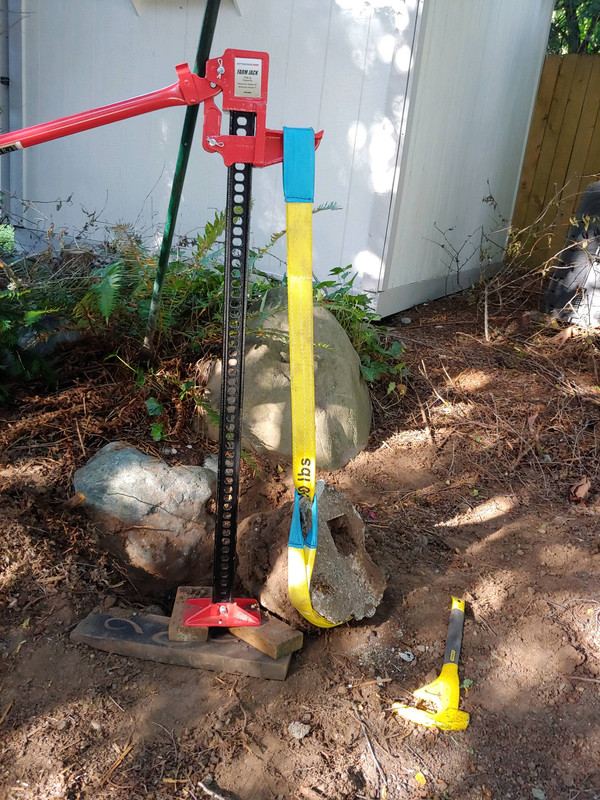My friend has this fence along his house leaning quite a bit. It would be worse except the neighbor across braced it. 
The two bad (weak) posts appear to be the one to the left of the end of the ivy in the middle of the pic, and the next one to the right just under the ivy out of view. My plan was to dig a hole along the existing posts, fill them with concrete and set new posts adjacent as a scab, then lag-bolt the old one to the new once cured. Do this twice for the two weak ones, and cut off the ivy (is it that much weight that I should?).
How deep to sink the new post? (I am thinking at least 12" or more - Seattle-ish so frost line is not an issue)
How tall? (I am thinking 4' above ground at least, but maybe more)
Should I encapsulate the concrete in a container (like a pail), or in the ground is ok?
I am thinking a container is overkill - my grandfather used to do it that way, but then again he drove steam trains so lots of things have changed since then. I am thinking gravel and concrete in the hole is ok. Also I should mention, there is a French drain service several houses/yards running just on the other side of the fence. The neighbor had it cleaned and repaired a few years ago, so drainage is good. It did have damage to it near the street junction for a while, and they may have been what caused this, now that I think of it...
I am thinking gravel and concrete in the hole is ok. Also I should mention, there is a French drain service several houses/yards running just on the other side of the fence. The neighbor had it cleaned and repaired a few years ago, so drainage is good. It did have damage to it near the street junction for a while, and they may have been what caused this, now that I think of it...
As the sharp-eyed will notice, the fence height was raised later after initial construction, so that may have played a part, too. The "bad" posts do not appear to be rotted, just weakened from ground water and weight. I know to cut the tops of the new posts 45 and seal well to prevent water intrusion.

The two bad (weak) posts appear to be the one to the left of the end of the ivy in the middle of the pic, and the next one to the right just under the ivy out of view. My plan was to dig a hole along the existing posts, fill them with concrete and set new posts adjacent as a scab, then lag-bolt the old one to the new once cured. Do this twice for the two weak ones, and cut off the ivy (is it that much weight that I should?).
How deep to sink the new post? (I am thinking at least 12" or more - Seattle-ish so frost line is not an issue)
How tall? (I am thinking 4' above ground at least, but maybe more)
Should I encapsulate the concrete in a container (like a pail), or in the ground is ok?
I am thinking a container is overkill - my grandfather used to do it that way, but then again he drove steam trains so lots of things have changed since then.
As the sharp-eyed will notice, the fence height was raised later after initial construction, so that may have played a part, too. The "bad" posts do not appear to be rotted, just weakened from ground water and weight. I know to cut the tops of the new posts 45 and seal well to prevent water intrusion.
Last edited:

